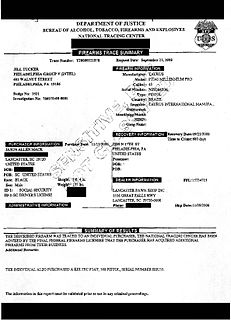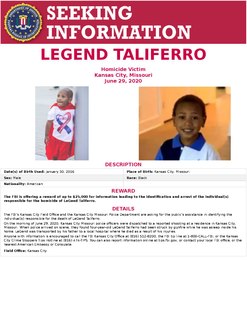
The United States Department of Justice (DOJ), also known as the Justice Department, is a federal executive department of the United States government tasked with the enforcement of federal law and administration of justice in the United States. It is equivalent to the justice or interior ministries of other countries. The modern incarnation of the department was formed in 1870 during the Ulysses S. Grant presidency. The department is composed of federal law enforcement agencies, including the U.S. Marshals Service, the Federal Bureau of Investigation, the Bureau of Alcohol, Tobacco, Firearms and Explosives, and the Drug Enforcement Administration. The primary actions of the DOJ are investigating instances of white collar crime, representing the U.S. government in legal matters, and running the federal prison system. The department is also responsible for reviewing the conduct of local law enforcement as directed by the Violent Crime Control and Law Enforcement Act of 1994.

The Violent Crime Control and Law Enforcement Act of 1994, commonly referred to as the 1994 Crime Bill, the Clinton Crime Bill, or the Biden Crime Law, is an Act of Congress dealing with crime and law enforcement; it became law in 1994. It is the largest crime bill in the history of the United States and consisted of 356 pages that provided for 100,000 new police officers, $9.7 billion in funding for prisons and $6.1 billion in funding for prevention programs, which were designed with significant input from experienced police officers. Sponsored by U.S. Representative Jack Brooks of Texas, the bill was passed by Congress and signed into law by President Bill Clinton. Then-Senator Joe Biden of Delaware drafted the Senate version of the legislation in cooperation with the National Association of Police Organizations, also incorporating the Violence Against Women Act (VAWA) with Senator Orrin Hatch.

The Bureau of Alcohol, Tobacco, Firearms and Explosives (ATF) is a federal law enforcement organization within the United States Department of Justice. Its responsibilities include the investigation and prevention of federal offenses involving the unlawful use, manufacture, and possession of firearms and explosives; acts of arson and bombings; and illegal trafficking and tax evasion of alcohol and tobacco products. The ATF also regulates via licensing the sale, possession, and transportation of firearms, ammunition, and explosives in interstate commerce. Many of the ATF's activities are carried out in conjunction with task forces made up of state and local law enforcement officers, such as Project Safe Neighborhoods. The ATF operates a unique fire research laboratory in Beltsville, Maryland, where full-scale mock-ups of criminal arson can be reconstructed. The agency is led by Regina Lombardo, Acting Director, and Ronald B. Turk, Acting Deputy Director. The ATF has 5,101 employees and an annual budget of $1.274 billion (2019).
A Special Agent is an investigator or detective for a governmental or independent agency, who primarily serves in criminal investigatory positions. Additionally, many federal and state "Special Agents" operate in "criminal intelligence" based roles as well. Within the U.S. federal law enforcement system, dozens of federal agencies employ federal law enforcement officers, each with different criteria pertaining to the use of the titles Special Agent and Agent.

In the United States, a gun show is an event where promoters generally rent large public venues and then rent tables for display areas for dealers of guns and related items, and charge admission for buyers. The majority of guns for sale at gun shows are modern sporting firearms. Approximately 5,000 gun shows occur annually in the United States.
The National Center for the Analysis of Violent Crime (NCAVC) is a specialist FBI department. The NCAVC's role is to coordinate investigative and operational support functions, criminological research, and training in order to provide assistance to federal, state, local, and foreign law enforcement agencies investigating unusual or repetitive violent crimes.
The Behavioral Analysis Unit (BAU) is a department of the Federal Bureau of Investigation's National Center for the Analysis of Violent Crime (NCAVC) that uses behavioral analysts to assist in criminal investigations. The mission of the NCAVC and the BAU is to provide behavioral based investigative and/or operational support by applying case experience, research, and training to complex and time-sensitive crimes, typically involving acts or threats of violence.
The Organized Crime Drug Enforcement Task Force is a federal drug enforcement program in the United States, overseen by the Attorney General and the Department of Justice. It primarily concerns itself with the disruption of major drug trafficking operations and related crimes, such as money laundering, tax and weapon violations, and violent crime. The task force was created in 1982, and employs approximately 2500 agents.

Crime in the United States has been recorded since the early 1600s. Crime rates have varied over time, with a sharp rise after 1900, reaching a broad bulging peak between the 1970s and early 1990s. Since then, crime has declined significantly and remains moderate at best nationwide, with crime rates continuing to decline through the first two decades of the new millenium. Since 1994, crime rates have steadily decreased, before rising up after 2015 until 2018. From 2018 to 2019, crime rates have recontinued at a steady decline onwards from that point in time.

The Behavioral Science Unit (BSU) is the original name of a unit within the Federal Bureau of Investigation's (FBI) Training Division at Quantico, Virginia, formed in response to the rise of sexual assault and homicide in the 1970s. The unit was usurped by the Critical Incident Response Group (CIRG) and renamed the Behavioral Research and Instruction Unit (BRIU) and currently is called the Behavioral Analysis Unit (5) (BAU-5) within the National Center for Analysis of Violent Crime (NCAVC). The BAU-5 currently works on developing research and then using the evidence-based results to provide training and improve consultation in the behavioral sciences—understanding who criminals are, how they think, why they do what they do—for the FBI and law enforcement communities.
The following outline is provided as an overview of and introduction to law enforcement:
The federal government of the United States empowers a wide range of law enforcement agencies to maintain law and public order related to matters affecting the country as a whole.

The California Department of Justice is a statewide investigative law enforcement agency and legal department of the California executive branch under the elected leadership of the California Attorney General (AG) which carries out complex criminal and civil investigations, prosecutions, and other legal services throughout the US state of California. The Department is equivalent to the State Bureau of Investigation in other states.
Project Gunrunner is a project of the U.S. Bureau of Alcohol, Tobacco, Firearms and Explosives (ATF) intended to stem the flow of firearms into Mexico, in an attempt to deprive the Mexican drug cartels of weapons.

The Greenville County Sheriff's Office is based in Greenville County, South Carolina, and has its headquarters in the city of Greenville. The office employs more than 450 deputies who serve a county of more than 500,000 residents.

eTrace is an Internet-based firearm trace request submission system, developed by the United States' federal government, Bureau of Alcohol, Tobacco, Firearms and Explosives, that provides for the electronic exchange of traced firearm data in a secure internet-based environment. Participating law enforcement agencies with access to the internet can acquire 24/7 real-time capabilities to electronically submit firearm trace requests, monitor the progress of traces, retrieve completed trace results, and to query firearm trace related data in Bureau of Alcohol, Tobacco, Firearms and Explosives (ATF) firearms registration database at the National Tracing Center. Firearms tracing is the systematic tracking of the movement of a firearm from its creation by the manufacturer or its introduction into U.S. commerce by the importer, through the distribution chain to the first retail purchase. Release 4.0, a bilingual version of eTrace was deployed in December, 2009 for the benefit of Spanish-speaking countries.

The Detective Bureau is one of 20 bureaus that constitute the New York City Police Department and is headed by the three star Chief of Detectives. The Detective Squad was formed in 1857 with the Detective Bureau later formed in 1882.

"Gunwalking", or "letting guns walk", was a tactic used by the Arizona U.S. Attorney's Office and the Arizona Field Office of the United States Bureau of Alcohol, Tobacco, Firearms and Explosives (ATF), which ran a series of sting operations between 2006 and 2011 in the Tucson and Phoenix area where the ATF "purposely allowed licensed firearms dealers to sell weapons to illegal straw buyers, hoping to track the guns to Mexican drug cartel leaders and arrest them". These operations were done under the umbrella of Project Gunrunner, a project intended to stem the flow of firearms into Mexico by interdicting straw purchasers and gun traffickers within the United States. The Jacob Chambers Case began in October 2009 and eventually became known in February 2010 as "Operation Fast and Furious" after agents discovered Chambers and the other suspects under investigation belonged to a car club.
The National Network for Safe Communities (NNSC) is a research center at City University of New York John Jay College of Criminal Justice. The NNSC works with communities to reduce violence, minimize arrest and incarceration, and increase trust between law enforcement and the public. Working in partnership with cities around the country the NNSC provides advising on implementing evidence-based violence reduction strategies. Additionally, the NNSC provides guidance on how to build trust between law enforcement and the communities it serves, facilitates connections between practitioners within and across jurisdictions, and serves as a resource for knowledge about violence prevention and reduction strategies.

Operation Legend was a federal law enforcement operation in the United States initiated by the administration of President Donald Trump. The operation was named after four-year-old LeGend Taliferro, who was shot and killed in Kansas City, Missouri, on June 29, 2020. According to the White House, Operation Legend was implemented after President Trump began deploying federal law enforcement agents to “fight violent crime” in the wake of the George Floyd protests. For Operation Legend, agents from various federal agencies were deployed to aid and assist city and county law enforcement officers.












